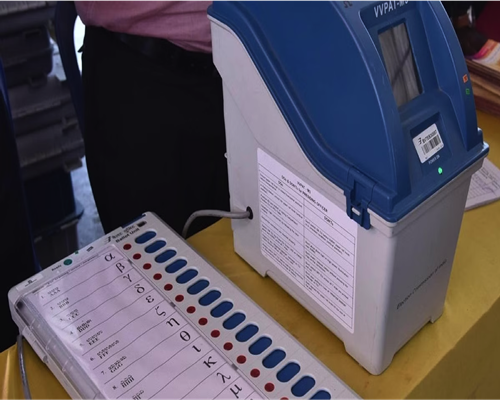
Recently, the Supreme Court of India ruled not to hear a petition asking for an audit of
electronic voting machines (EVMs). The plea was not allowed to be heard by a three-
judge bench led by Chief Justice of India D.Y. Chandrachud on the grounds that revealing
the source code of EVMs would enable malevolent actors to get around the machines'
security.
In India, EVMs were first used in the Paravur Assembly Constituency of Kerala in the
year 1982. Since 1998, the Election Commission has increasingly used EMVs instead of
ballot boxes. In 2003, all state elections and by-elections were held using EVM’s; and
encouraged by this, in 2004, the Election Commission took a historic decision to use
only EVMs for the Lok Sabha elections.
Known as the "mother of democracies," Britain elects its Members of Parliament to the
House of Commons using paper ballots. On the other hand, the US, sometimes known as
the oldest democracy in the world, combines the use of electronic voting machines with
paper ballots. Currently, beside India, UK and the US, electronic voting is used in
Namibia, Nepal, Armenia, Bangladesh, Bhutan, Australia, Belgium, Bulgaria, Italy,
Switzerland, Canada, Mexico, Argentina, Brazil, Chile, Peru, and Venezuela.
EVM has been devised and designed by the Technical Experts Committee (of the
Election Commission in collaboration with two Public Sector undertakings: Bharat
Electronics Ltd, Bangalore (under Ministry of Defence ) and Electronic Corporation of
India Ltd, Hyderabad (under Department of Atomic Energy). They do not require
electricity. They run on an ordinary battery assembled by Bharat Electronics
Limited/Electronics Corporation of India Limited.
An EVM has two parts: a Control Unit and a Balloting Unit connected by a cable. The
Control Unit stays with the polling officer, while the Balloting Unit is in the voting
booth. The voter has to simply press the blue button on the Ballot Unit against the
candidate and symbol of his choice and the vote is recorded.
Benefits
Efficiency: EVMs streamline the voting process, making it faster and more
efficient. They eliminate the need for manual counting, reducing the time required to
declare election results.
Transparency: EVMs enhance transparency in the electoral process by providing
a clear and verifiable record of votes cast. With features like VVPAT, voters can verify
that their votes are recorded accurately. VVPAT is an independent verification printer
machine and is attached to electronic voting machines. It allows voters to verify if their
vote has gone to the intended candidate.
Cost-effectiveness: EVMs offer cost savings in terms of paper, printing,
transportation, and storage, as they eliminate the need for millions of printed ballot
papers for each election cycle.
Challenges
Lack of Transparency: Some critics argue that the inner workings of EVMs are not
sufficiently transparent, leading to doubts about the accuracy and fairness of the
voting process.
Reliability: Questions have been raised about the reliability of EVMs, including the
possibility of technical malfunctions or errors that could affect the outcome of an
election.
Trust Issues: Despite security measures, there is still a lack of trust among some
political parties and voters regarding the reliability and authenticity of EVMs, leading
to calls for additional safeguards or alternative voting methods.
With 1.4 billion people living in our nation, conducting elections with ballots for such a
vast number of voters is difficult. Automation is the only practical solution, and
electronic voting machines suit the bill. Many of the current issues are resolved by
EVM, but it still requires regular R&D, timely bug fixes, security updates, and hardware
upgrades much like any other electrical device or software component.
There have been significant debates regarding the reliability of EVMs, and it is okay to
raise these issues since it shows a will to grow and adapt. Citizens have the
constitutional right to vote. Voting in a democracy is a representation of the love and
resentment of the people. Thus, voters need to take voting seriously, and the state has a
duty to defend citizens' constitutional rights. Nevertheless, in the current digital era,
giving up on EVMs and switching back to paper votes would not be a wise decision.
However, certain nations—such as France, Germany, Italy, Ireland, England, and so
on—have never adopted or abandoned EVMs because of a lack of transparency.
In a democracy, there is perhaps nothing more important than the credibility of the
electoral process; therefore in a democracy, elections should not only be fair but should
be seen to be fair. By shoring up its image and bringing in some more transparent
reforms, the EC can restore faith in elections.